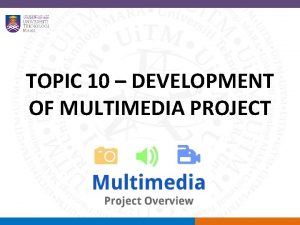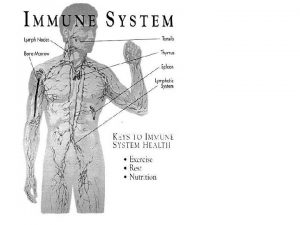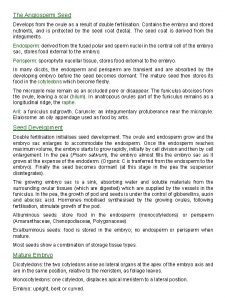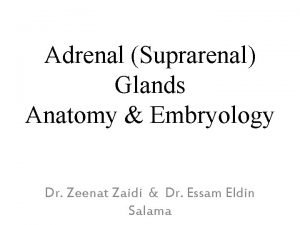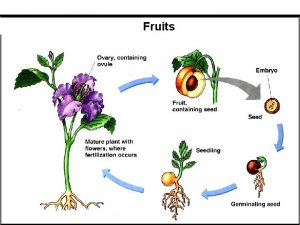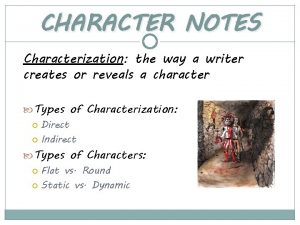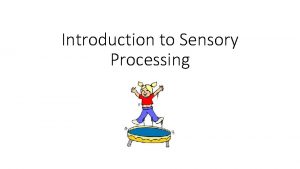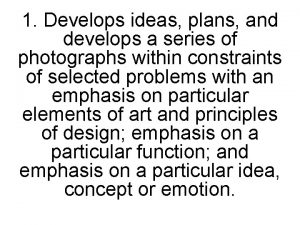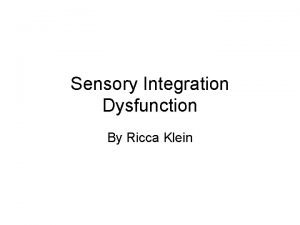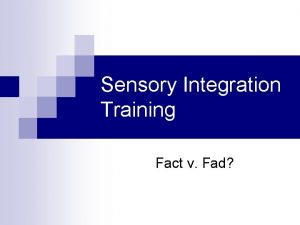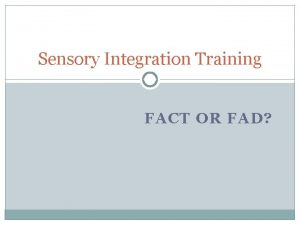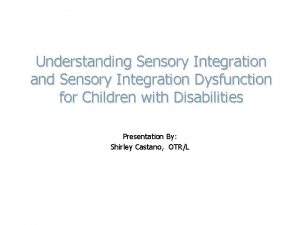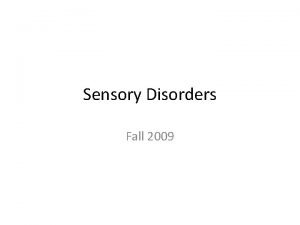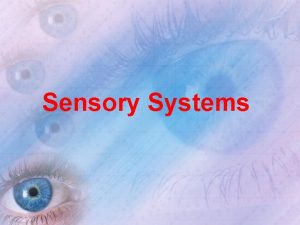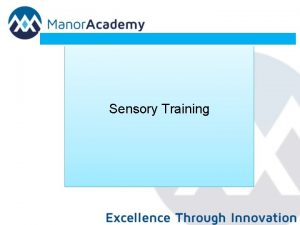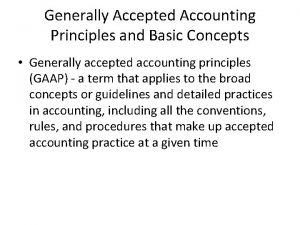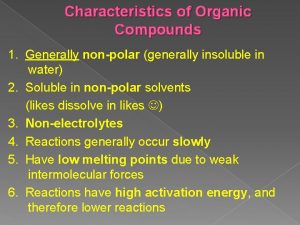SENSORY INTEGRATION SENSORY INTEGRATION generally develops throughout the

















- Slides: 17

SENSORY INTEGRATION

SENSORY INTEGRATION: • generally develops throughout the course of ordinary childhood development • but in some children sensory integration does not develop as efficiently as it should – disorder of the nervous system causes a number of problems in learning, development, and/or behavior

WHAT IS SENSORY PROCESSING DISORDER? https: //www. youtube. com/watch? v=6 O 6 Cm 0 Wx. EZA

SENSORY INTEGRATION THEORY The sensory integration theory states a belief that by providing sensory intake (activity) the nervous system will be able to process information and learning can take place.

SENSORY SYSTEM The information we receive from the environment comes to us through our senses. We are all familiar with the senses involving: – Taste – Sight – Smell – Sound

SENSORY SYSTEM However, our nervous system also utilizes a sensory system involving: – touch (tactile) – movement (vestibular) – sense of body position (proprioception)

DEFINITIONS Tactile (touch): – Tactile defensiveness: a tendency to react negatively and emotionally to unexpected, light-touch sensations. – Tactile discrimination: awareness of touching or of being touched by something; ability to distinguish differences in touch sensations; awareness of physical attributes of an object, such as its size, shape, temperature, density, and texture.

PROBLEM BEHAVIORS ASSOCIATED WITH TACTILE: • Pushing/Hitting/Touching others • Problem with standing in line • Sensitive to different textures • Seeks tactile input - touching/grabbing items

DEFINITIONS Vestibular (balance): – sensory system that responds to the pull of gravity, providing information about the head’s position in relation to the surface of the earth, and coordination movements of the eyes, head, and body that affect equilibrium, muscle tone, vision, hearing, and emotional security. – Receptors are in the inner ear.

PROBLEM BEHAVIORS ASSOCIATED WITH VESTIBULAR: • Fidgeting and moving when sitting in chairs • Rocking motions • Falling or excessive movement • Twirling and/or spinning

DEFINITIONS Proprioception (position in space): – unconscious awareness of sensations coming from one’s muscles and joints • provides information about when and how muscles contract or stretch • provides information about when and how joints bend, extend, or are pulled – Provides information about where each part of the body is and how it is moving

PROBLEM BEHAVIORS ASSOCIATED WITH PROPRIOCEPTION: • Poor upright posture • Bumps into things • Slouches in chair • Lays head on desk • Appears fatigued

OTHER PROBLEM BEHAVIORS ASSOCIATED WITH THE SENSORY SYSTEM: Oral • Chewing on Things • Drooling • Messy eating habits

OTHER PROBLEM BEHAVIORS ASSOCIATED WITH THE SENSORY SYSTEM: Auditory – Sensitivity to sound – Covers ears – Easily distracted by noises – Making noises – Humming – Talking excessively

OTHER PROBLEM BEHAVIORS ASSOCIATED WITH THE SENSORY SYSTEM: Visual • Reading difficulty • Difficulty copying from the board • Light sensitivity, covers or shades eyes

INTERVENTIONS FOR SENSORY RELATED ISSUES Review or download a copy of: Occupational Therapy Guide to Interventions http: //marysresources. weebly. com/ot-resources. html

OTHER IDEAS Included in the OT Guide to Interventions: v Handwriting ü Warm-Up activities ü Pencil Grasp ü Legibility ü Reversals v Cutting ü Scissor grasp ü Positioning and manipulation v Attention ü Distractibility ü Organization
 Interventricular foramen
Interventricular foramen Democracy develops in england
Democracy develops in england 8 steps in developing multimedia project
8 steps in developing multimedia project An organism develops active immunity as a result of
An organism develops active immunity as a result of Develops products for distribution from raw goods
Develops products for distribution from raw goods Testa of seed develops from
Testa of seed develops from An inventor develops a stationary cycling device
An inventor develops a stationary cycling device Adrenal cortex develops from
Adrenal cortex develops from Suppose the acme drug company develops
Suppose the acme drug company develops Fartlek training develops
Fartlek training develops The ripened ovary wall of a fruit
The ripened ovary wall of a fruit Two types of wbc
Two types of wbc How does a fruit form
How does a fruit form Army lrm
Army lrm Fictional character
Fictional character Prologue section 3 democracy develops in england
Prologue section 3 democracy develops in england The h bomb
The h bomb As jamal develops his presentation
As jamal develops his presentation


